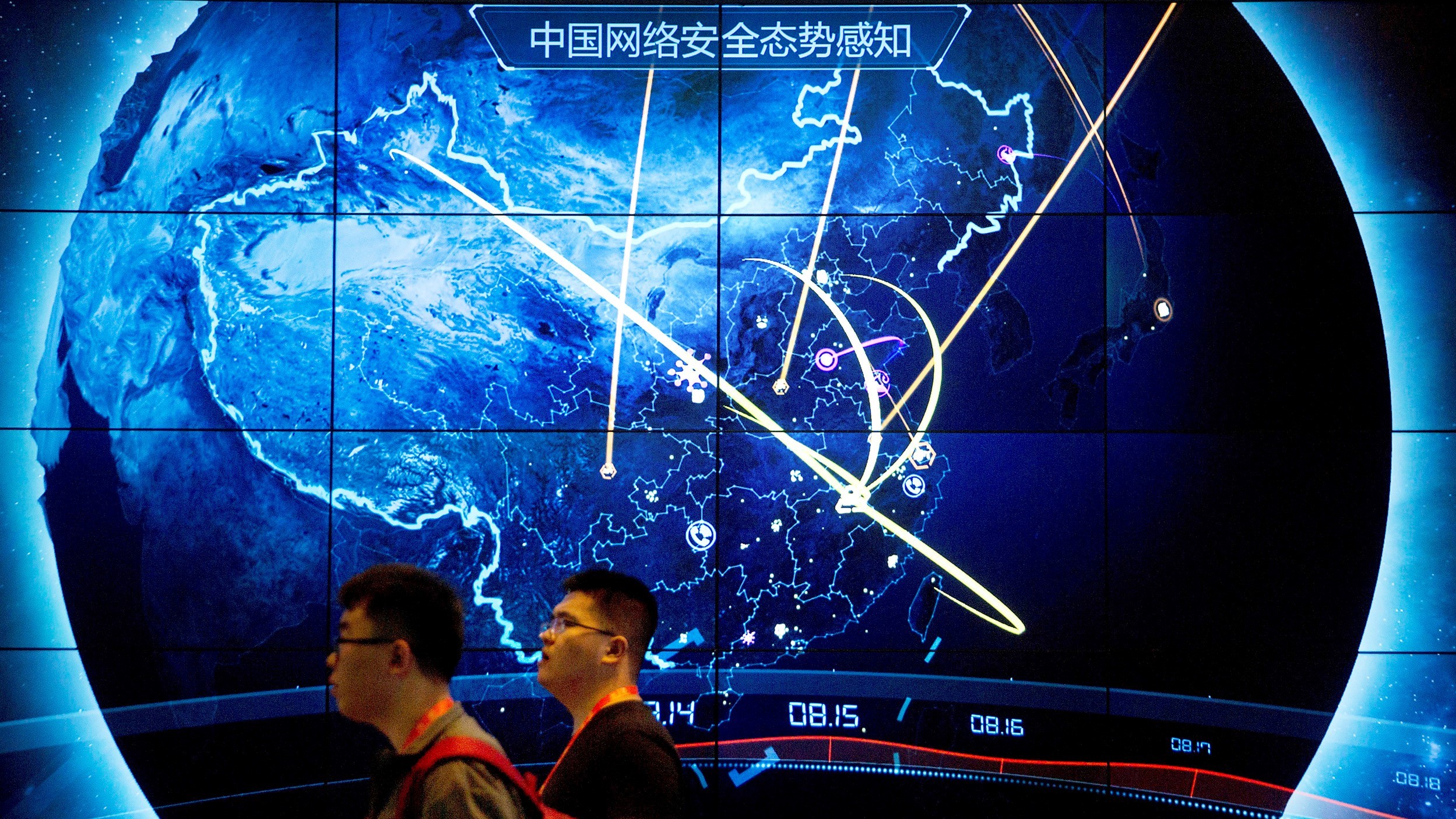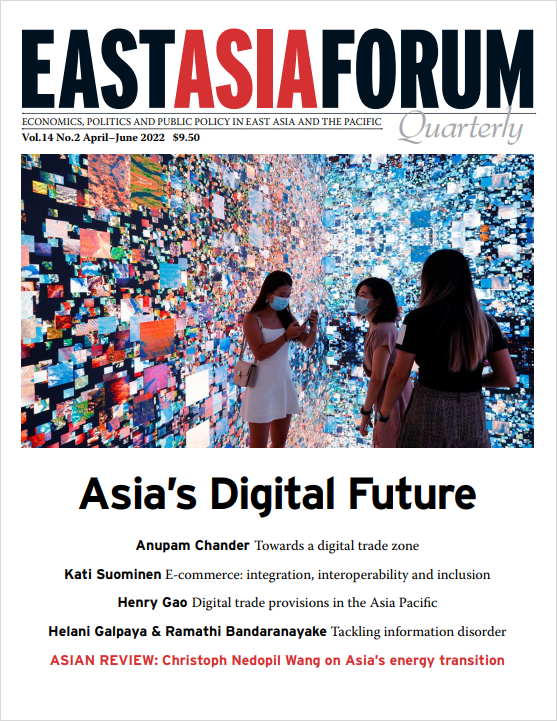Published 14 September 2022
Is there an Asian digital regime? There was, though it was closer to a global regime based on neoliberal principles of free trade and globally distributed supply chains in which Asia played a special part. But that order is disintegrating, as nations inside and outside Asia revert to a new form of neo-mercantilism focused on digital technologies. In this new model, national security seeks to displace trade and growth on the agenda.
In the 1980s and 1990s, a new ideological, political and economic movement started to transform the Western political economy. Policymakers tamed inflation, lowered taxes, curbed the expansion of the welfare state, privatized state-owned industries, introduced competition into regulated industries, reduced trade barriers and deregulated capital flows. The impact of this policy shift was magnified when China cast off Maoism and moved towards a domestic market economy in 1979. It accelerated even more when the Soviet Union collapsed in 1990 and newly independent Eastern European countries moved from central planning to market economies.
Two of the most important industries that were liberalized in this phase of modern commercial development were telecommunications and information technology. From the 1980s on, many state-owned post, telephone and telegraph monopolies became privately owned firms in more competitive markets. Standardization moved away from states and intergovernmental organizations to private non-profits like the Internet Engineering Task Force, 3rd Generation Partnership Project and other industry-led forums.
At the same time, plurilateral trade agreements — especially the WTO’s 1996 Information Technology Agreement (ITA) — cleared a path for a globally distributed supply chain in information and communication technology (ICT) equipment. East Asian producers were the chief beneficiaries. Largely due to the performance of Asian economies, developing economies’ share in world exports of ITA products jumped from 26% in 1996 to 63% in 2015, and seven of the top ten exporters of ITA products were Asian economies.
The internet and the world wide web tied together this emerging digital economy with open, non-proprietary standards. A transnational platform economy based on search, social media, e-commerce, video-sharing and apps began to emerge. It was led by US companies, but Chinese start-ups were fast followers. Fuelled by creative entrepreneurs and helped along by capital and partnerships from the United States, China developed its own platform economy that dominated its sizeable national market and then developed regional and global aspirations.
Neoliberal globalisation is now being reversed all over the world. Both left-wing and right-wing critics are pushing for a more bordered economy. There are tariff wars reminiscent of the 1930s, attacks on immigration and calls for greater national autonomy. This shift is largely due to the sometimes spurious link between national security and trade in ICT goods and services.
In the past five years, the United States has tarnished all Chinese ICT firms as Trojan horses for the Chinese Communist Party (CCP). It has actively sought to cripple Huawei, cutting it off from advanced semiconductors on the grounds that the CCP will exploit any Huawei equipment in a domestic network. The United States has de-licensed four Chinese telecom firms for similar reasons and pulled the plug on several international cables due to some Chinese ownership.
A new law governing foreign investment passed in 2018 prevented China from investing in high-tech firms regardless of whether they produce military capabilities. The US Council on Foreign Relations published a pamphlet with an open call for weaponizing digital trade.
This lack of trust is reciprocal and contagious. China has always been aggressive about leveraging market access for technology transfer efforts. But its most recent efforts to achieve self-sufficiency in US-dominated high-tech industries have spooked Washington.
China has intensified its blocking of foreign information services, doubled down on domestic censorship and eviscerated Hong Kong’s autonomy to target free expression. Since 2020, Beijing has instituted sweeping regulations that restrict the outbound and inbound flow of business data. It is excluding foreign cloud service providers from its domestic market and imposing burdensome cybersecurity reviews on its own digital companies. China has discouraged its private firms from listing on US stock exchanges because the auditing process might reveal sensitive national data. China’s crackdown on Alibaba’s financial innovations seemed designed more to subordinate the firm and protect CCP control of finance than to avoid market failures.
India, with its nationalist Bharatiya Janata Party regime, aligns with this pattern. Its military spat with China led to the ban of dozens of Chinese apps. Despite benefiting from US firms’ outsourcing in IT services, it is planning to create national champions in digital payments and other areas that can substitute for the services of US multinationals. India is also imposing more censorship and surveillance on internet users.
Japan and some ASEAN countries may still be interested in continuing the trend towards liberalization and globalization in the digital arena. Members of the Regional Comprehensive Economic Partnership (RCEP) are trying to facilitate some aspects of digital trade, and there are attempts to expand ITA and advance WTO efforts in digital services. But the mistrust and securitization driven by the US–China split may overwhelm those efforts.
Neo-mercantilism calls attention to the way trade and investment in technology and national industrial policies are related to national security and the relative power of the state. In contemporary policy dialogues, trade policy, tech policy, foreign policy, military strategy, cybersecurity and industrial policy are distinct areas of expertise. But looking at the US–China conflict as the two nations competing for a dominant role in the global order analytically slots those pieces together. It is a digital neo-mercantilism because technologies such as 5G telecommunications, semiconductors, social media platforms and artificial intelligence capabilities are at the center of the competition.
The globalized regime that East Asian countries benefited from so greatly is fragmenting into several large geopolitical blocs — the United States, Europe, China and India — resulting in a more bordered space governed by tensions and power plays.
© The Hinrich Foundation. See our website Terms and conditions for our copyright and reprint policy. All statements of fact and the views, conclusions and recommendations expressed in this publication are the sole responsibility of the author(s).







